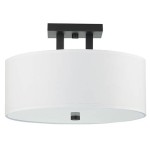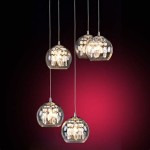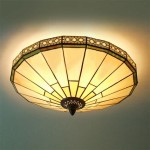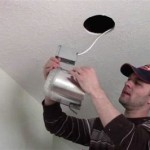Illuminate Your Kitchen: Essential Aspects of Kitchen Ceiling Lighting Ideas
The kitchen is often considered the heart of the home, a place where we gather, cook, and share meals. Proper lighting is crucial for creating a functional, inviting, and stylish kitchen. Consider the following aspects when designing your kitchen ceiling lighting scheme.
1. Layering and Lighting Zones
Avoid relying solely on one large central fixture. Instead, layer different lighting types to create a cohesive and versatile lighting plan. Divide your kitchen into zones such as food preparation, cooking, and dining areas. Each zone requires specific lighting intensities and types.
2. Task Lighting for Functionality
Task lighting focuses on illuminating specific work areas, such as the sink, stovetop, and countertops. Use under-cabinet lighting, pendants, or recessed downlights to provide ample, glare-free illumination for food preparation and cooking.
3. Ambient Lighting for General Illumination
Ambient lighting creates a general level of brightness throughout the kitchen. Chandeliers, flush mounts, or recessed downlights can provide overall illumination. Consider the size and height of your kitchen when selecting ambient lighting fixtures.
4. Accent Lighting for Visual Interest
Accent lighting highlights architectural features or decorative elements. Use track lighting, picture lights, or cove lighting to draw attention to open shelving, artwork, or unique kitchen structures.
5. Natural Light and Dimming Controls
Incorporate natural light wherever possible. Place windows or skylights strategically to reduce energy consumption and enhance the ambiance. Additionally, install dimmer switches to adjust lighting levels from bright for tasks to dim for a cozy atmosphere.
6. Style and Material Considerations
Choose lighting fixtures that complement the overall design style of your kitchen. Consider materials such as glass, metal, or wood to match your kitchen's finishes. Be mindful of the scale and proportion of fixtures in relation to the size of your kitchen.
7. Ceiling Height and Fixture Placement
The height of your ceiling influences fixture placement. Recessed lighting is ideal for low ceilings, while pendant lights or chandeliers can add height to higher ceilings. Ensure fixtures are placed strategically to avoid blocking natural light or creating glare.
8. Maintenance and Bulb Choice
Consider the ease of maintenance and bulb choice. Choose fixtures that are easy to clean and replace bulbs. Consider LED bulbs for energy efficiency and long lifespan. The color temperature of bulbs affects the ambiance of your kitchen; choose warm white (2700-3000K) for a cozy atmosphere.
9. Ventilation and Heat Considerations
Incorporate ventilation into your lighting plan to prevent heat build-up in the kitchen. Use recessed downlights with heat-resistant trims or pendant lights that allow heat to escape. Avoid placing heat-sensitive fixtures near appliances that generate heat.
10. Professional Consultation
For complex kitchen lighting plans or if you require specific technical expertise, consider consulting a lighting designer or electrician. They can help you optimize lighting levels, minimize glare, and ensure code compliance.

Stunning Kitchen Lighting Designs To Transform Into A Designer Space

35 Best Kitchen Lighting Ideas 2024 Pictures
?strip=all)
Kitchen Lighting Ideas Lights Co

Kitchen Ceiling Lighting Ideas For Your Home Designcafe

25 Best Kitchen Lighting Ideas 2024 Moonbeam Lightingmoonbeam Blog

Kitchen Lighting Ideas The Home Depot

Creative Lighting Ideas For A Brighter Space

20 Impressive Kitchen Lighting Ideas To Perk Up Your Home The Fancy Place

25 Best Kitchen Lighting Ideas 2024 Moonbeam Lightingmoonbeam Blog

Small Kitchen Lighting Ideas That Make It Seem Bigger Flip The Switch








